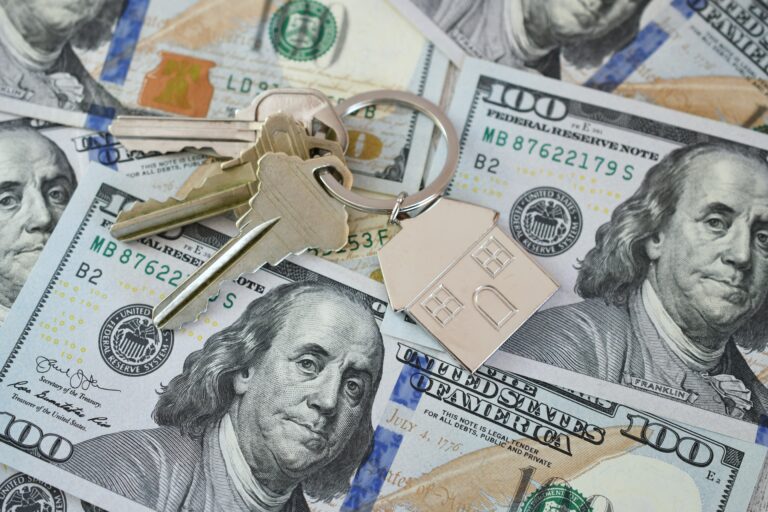
When you want to get a loan, one important decision is choosing between a fixed-rate or variable-rate loan. Both options have their own advantages and drawbacks, and understanding these can help you make the best choice for your financial situation. Here’s a simple guide to help you understand the differences between fixed-rate and variable-rate loans.

A fixed-rate loan has an interest rate that stays the same for the entire duration of the loan. This means your monthly payments will always be the same amount. Because the payments are consistent, it makes it easier to budget and plan for your financial future. You won’t have to worry about your payments going up if interest rates rise.
This stability can provide peace of mind, knowing exactly what you’ll owe each month. Fixed-rate loans are especially good if you prefer predictable payments and want to avoid surprises. This type of loan is a popular choice for long-term planning.
Predictable Payments: Since the interest rate doesn’t change, your monthly payments stay the same. Having consistency in your budgeting process greatly facilitates managing your finances. You’ll always know how much you need to pay each month. This predictability makes managing your finances simpler and less stressful.
Budgeting Made Easy: With consistent payments, it’s easier to plan and manage your monthly expenses. You know exactly how much to set aside each month for your loan. This stability helps you avoid surprises in your budget. It makes financial planning simpler and more predictable.
Protection from Rising Rates: If interest rates go up in the future, your rate stays the same. This means you won’t have to pay more each month, potentially saving you money. The fixed rate protects you from market changes. This stability can give you peace of mind and financial security.
Higher Initial Rates: Fixed-rate loans often start with higher interest rates compared to variable-rate loans. This means your initial monthly payments might be more than with a variable-rate loan. The higher rate is the trade-off for having stable, predictable payments. It provides security but can cost more at the beginning.
Less Flexibility: If interest rates drop, you won’t benefit from lower payments unless you refinance. Your fixed rate stays the same even if market rates go down. To take advantage of lower rates, you would need to go through the refinancing process. This can involve additional costs and paperwork.
A variable-rate loan, also known as an adjustable-rate loan, has an interest rate that can change over time based on market conditions. This means your monthly payments can go up or down. If interest rates in the market rise, your loan’s interest rate may increase, causing your monthly payments to be higher.
Conversely, if market interest rates fall, your loan’s interest rate may decrease, leading to lower monthly payments. This variability can make it harder to predict your future loan costs. While you might start with lower payments compared to a fixed-rate loan, there’s a risk of payments increasing later. Understanding this can help you decide if a variable-rate loan fits your financial situation and risk tolerance.
Lower Initial Rates: Variable-rate loans typically start with lower interest rates than fixed-rate loans. This means your initial monthly payments are usually lower. These lower payments can make the loan more affordable at the beginning. It’s an attractive option if you need lower costs upfront.
Potential Savings: If interest rates decrease, your payments may also decrease. This can save you money over time. You benefit from lower monthly payments without needing to refinance. It’s a way to potentially reduce your loan costs if market rates go down.
Flexibility: These loans can be a good option if you plan to pay off the loan quickly or refinance in the near future. You can take advantage of the lower initial rates without worrying about long-term rate increases. If you know you’ll pay off the loan soon, a variable rate can be cost-effective. It’s a flexible choice for short-term or intermediate financial plans.
Unpredictable Payments: Since the interest rate can change, your monthly payments can increase. This makes it harder to predict and budget for your future expenses. One month your payment could be low, and the next it could be much higher. This variability can add stress to managing your finances.
Risk of Rising Rates: If interest rates go up, your payments will also go up. This means you could end up paying more each month than you initially planned. The total cost of your loan can increase significantly over time. This risk makes it important to consider whether you can handle potential payment increases.
Stable, Predictable Monthly Payments
You favor consistent and predictable monthly payments. With a fixed-rate loan, your payment amount stays the same every month. This consistency makes it easier to budget and plan your finances. You won’t have to worry about your payment suddenly increasing. This stability can reduce financial stress. It’s a good choice if you like knowing exactly what you’ll pay each month.
Staying Long-Term
You plan to stay in your home or keep the loan for a long period. Fixed-rate loans are ideal for long-term commitments. Over time, the stability of fixed payments can provide peace of mind. You won’t be affected by changing market interest rates. This can make it easier to manage your finances over the years. It’s a smart option if you’re planning for the long haul.
Protection Against Rate Increases
You want protection against potential interest rate increases. With a fixed-rate loan, your interest rate stays the same even if market rates go up. This shields you from higher monthly payments in the future. You can enjoy the security of knowing your rate won’t change. This protection helps you avoid unexpected increases in your loan costs. It’s beneficial if you’re concerned about rising rates.
Comfortable with fluctuating payments
You are comfortable with the possibility of fluctuating payments. With a variable-rate loan, your monthly payments can go up or down based on market conditions. This means you need to be okay with not having a fixed payment amount. If you can handle the changes in your budget, this option might work for you.
Paying off the loan quickly or refinancing
You expect to pay off the loan quickly or refinance soon. If you plan to pay off your loan in a short period, a variable-rate loan can be beneficial. You might enjoy lower payments initially without worrying about long-term rate increases. This can save you money if you don’t keep the loan for many years.
Taking advantage of lower initial rates
You want to take advantage of potentially lower initial rates. Variable-rate loans often start with lower interest rates compared to fixed-rate loans. This means your initial payments can be lower, making the loan more affordable at first. If you believe rates will stay low or decrease, this option could offer significant savings.
Before making a decision, consider your financial goals, your ability to handle payment changes, and how long you plan to keep the loan. Consulting with a financial advisor or loan officer can also provide personalized insights to help you choose the best option for your needs. By weighing the pros and cons of each type of loan, you can make a choice that supports your financial well-being and helps you achieve your goals.



Subscribe for our monthly newsletter to stay updated.

Startup loans help service-based businesses succeed without a storefront. This guide breaks down funding options for service entrepreneurs, how to qualify without a physical location, and how to use financing to scale operations, invest in tools, and build long-term stability.

Startup loans help service-based businesses succeed without a storefront. This guide breaks down funding options for service entrepreneurs, how to qualify without a physical location, and how to use financing to scale operations, invest in tools, and build long-term stability.

Startup loans help service-based businesses succeed without a storefront. This guide breaks down funding options for service entrepreneurs, how to qualify without a physical location, and how to use financing to scale operations, invest in tools, and build long-term stability.